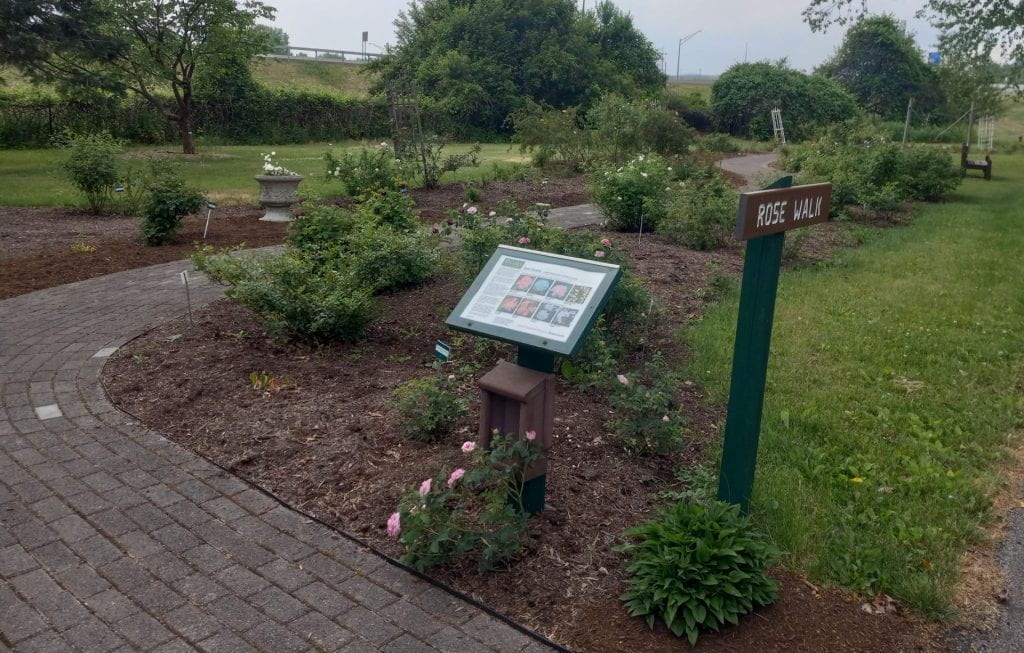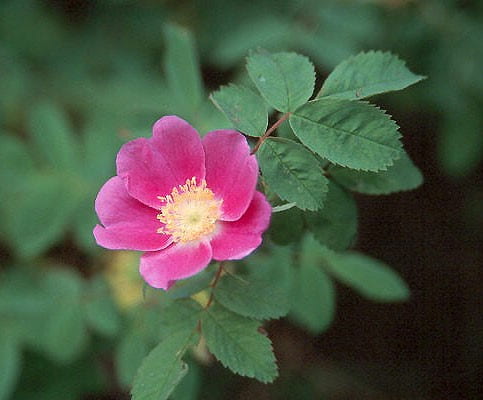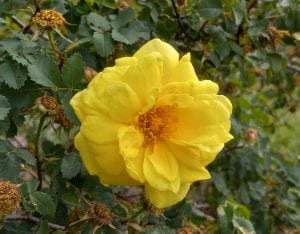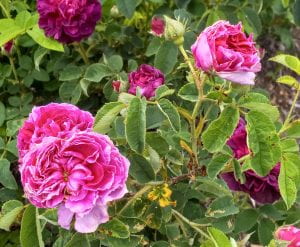
Few flowers can claim to have inspired humans more than the rose. In the language of flowers a rose holds many meanings, including romance, innocence, and jealousy. It is the national flower of England, and the state flower several times, including in New York. Roses are found in the works of Shakespeare, the Dutch Masters, Gertrude Stein, and Neil Young, to name a few. The Persian poet Hafer described its bloom as “loveliness unrivaled.”
Roses belong to the family Rosaceae, whose members include apples, cherries, strawberries, peaches and almonds. Fossil evidence of the genus Rosa dates back 35 million years. Roses are perennial shrubs that typically have thorny stems and glossy leaves with toothed edges. Flowers develop into fruits called hips. The growth habit depends on the variety, from classic shrub to climbing and even miniature forms. The world of roses today includes many thousands of varieties that have been widely cultivated from what is thought to be about 20 original species. New roses may arise from deliberate hybridizing (cross breeding) of differing species or varieties, or through spontaneous mutations known as “sports”. Over 100 examples of roses can be found in the Rose Garden at Cutler Botanic Garden.

Roses have been cultivated in China for 5000 years and were grown extensively in the Middle East during the Roman Period. The types of roses that were grown centuries ago are now categorized as Species, naturally occurring in the Northern Hemisphere. Species roses generally bloom only once in a season, producing many fragrant, single flowers that yield large brightly colored hips. One example of these roses from the past is Rosa eglanteria, sweetbriar rose, which can be found in the Cutler Rose Garden. It was widely grown during the time of Shakespeare and Chaucer, inspiring both. The foliage is apple scented.
Rose hybrids before the 1800s were selected for hardier plants or showier blooms but still limited to a single blooming time per season. They are classified as Old European Garden roses. Among the oldest of these are the Gallica Roses, which have been cultivated since the 13th century. Factions fighting for the throne of England in the mid 15th century used roses as their symbols, one white and one red. Rosa gallica Apothecary was the red rose representing the House of Lancaster during what came to be known as the War of the Roses. The Apothecary Rose is growing at Cutler Botanic Garden.
Rose hybridizers began crossing Old Garden varieties with Rosa chinensis to select for repeat blooming. Originally from China, tea roses have small continual flowers with a scent some describe as similar to tea. Hybrid perpetual roses were developed between 1840 and 1900. There were many varieties popular during that time, but those were largely displaced by newer varieties. There are three perpetual roses on display at Cutler, ‘Souvenir du Docteur Jamain, ‘Rein des Violettes,’ and ‘Marchesa Boccella’
The world of rose enthusiasts was taken by storm in 1867 with ‘La France’, the first hybrid tea rose with the upright and tightly curled flower that has become the industry standard for bouquets. Hybrid tea roses were then crossed with multiflora for clusters of repeat blooming roses.
Over the years, breeders have selected for color, disease resistance, ease of care, and growth habit. Wisconsin gardener William Radler developed the Knock-Out rose. This new class of rose is described by the American Rose Society as “a class of easy-care plants that encompass bushy roses that do not fit into any other category of rose.” They are low maintenance and flower abundantly and since their introduction in 2000 have become the most popular form of rose on the market.

There are too many more roses to describe them all here, so consider a visit to the Rose Garden. Mid-June is a good time to stroll down the path and catch many of those once in a season blooms. From miniature ‘Gourmet Popcorn’ to the rambling ‘Bleu Magenta’ to the Rosa foetida, or ’Harrison’s Rose’, there is much to explore. Cutler Botanic Garden is free and open to the public everyday from dawn to dusk.
Special thanks to Master Gardener Volunteer Linda Spatol for a wealth of information used in this article.



